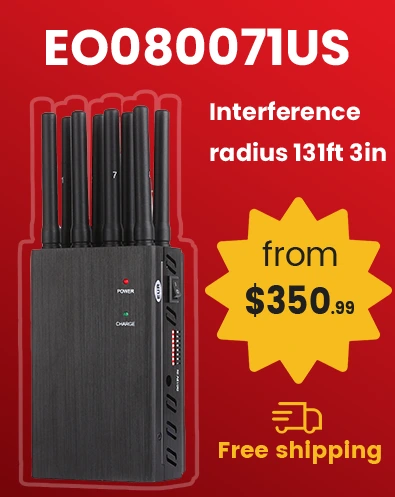Cellphone Signal Jammer and Blockers in Brazil
Mobile communications are quite developed in Brazil. This cannot be said for the entire country, as the northwest lacks mobile communications and even basic landlines. This is a fairly common problem in Latin American countries. The same problem exists in the mountainous areas of Mexico, for example. The main mobile operators in the country are Vivo, Claro, Tim and OI. For various reasons, you may need to block your cell phone signal in certain situations, and as in many countries, the use of signal jammers is a delicate legal issue that requires special attention. In this article, we will explore the current laws and regulations in Brazil regarding signal jammers. To do this, it is essential to understand the frequencies used by these operators.
Regulatory agencies governing the use of signal jammers
The National Telecommunications Agency (ANATEL) is the regulatory body responsible for supervising and regulating telecommunications in Brazil. ANATEL is responsible for enforcing Law 9.472/97 and has the power to confiscate any illegal equipment used for signal interference.
How to get legal authorization to use signal jammers in the country
In Brazil, the use of signal jammers is not legally authorized. Any individual or company using signal jammers is subject to criminal and civil penalties, including fines and up to two years in prison.
The Brazilian government conducted a 5G spectrum auction in 2021, which included the allocation of 3.5 GHz, 2.3 GHz, and 26 GHz bands. 5G networks have been launched in major cities in Brazil and are expected to expand further to more urban and rural areas across the country in the coming years. Brazil's vast geography and uneven population distribution make it challenging to deploy networks across the country, especially in the Amazon region and other remote areas.
Brazil's telecommunications market is mainly dominated by Claro, Vivo and TIM, with 4G networks covering a wide range of frequency bands including 700 MHz, 1800 MHz and 2600 MHz, while 5G networks mainly rely on 3.5 GHz and millimeter wave bands.
Frequencies that need to be covered to block cell phone signals:
In Brazil, mobile operators use different frequency bands to provide services. Here are the main frequencies used by major operators:
Claro
Claro is one of the largest telecom operators in Brazil, owned and operated by Mexico's telecom giant América Móvil. As part of América Móvil, Claro's 4G coverage is extensive, covering almost all major cities and most rural areas in the country. 5G network services are already online in some major cities such as São Paulo, Rio de Janeiro and Brasilia.
- GSM strip: 850 MHz
- UMTS band (3G): 850 MHz, 2100 MHz
- LTE band (4G): 700 MHz (B28), 1800 MHz (B3), 2600 MHz (B7)
Mobile Virtual Network Operator (MVNO)
Brazil has a rapidly growing number of MVNOs, including Datora, Surf Telecom and Correios Celular. These operators provide services by leasing the networks of major telecom operators, offering flexible and competitively priced packages for specific markets.
To effectively block mobile phone signals in Brazil, you should consider covering the above frequencies, especially the LTE (4G) bands used by operators. This will ensure that mobile communications in the target area are effectively blocked.







